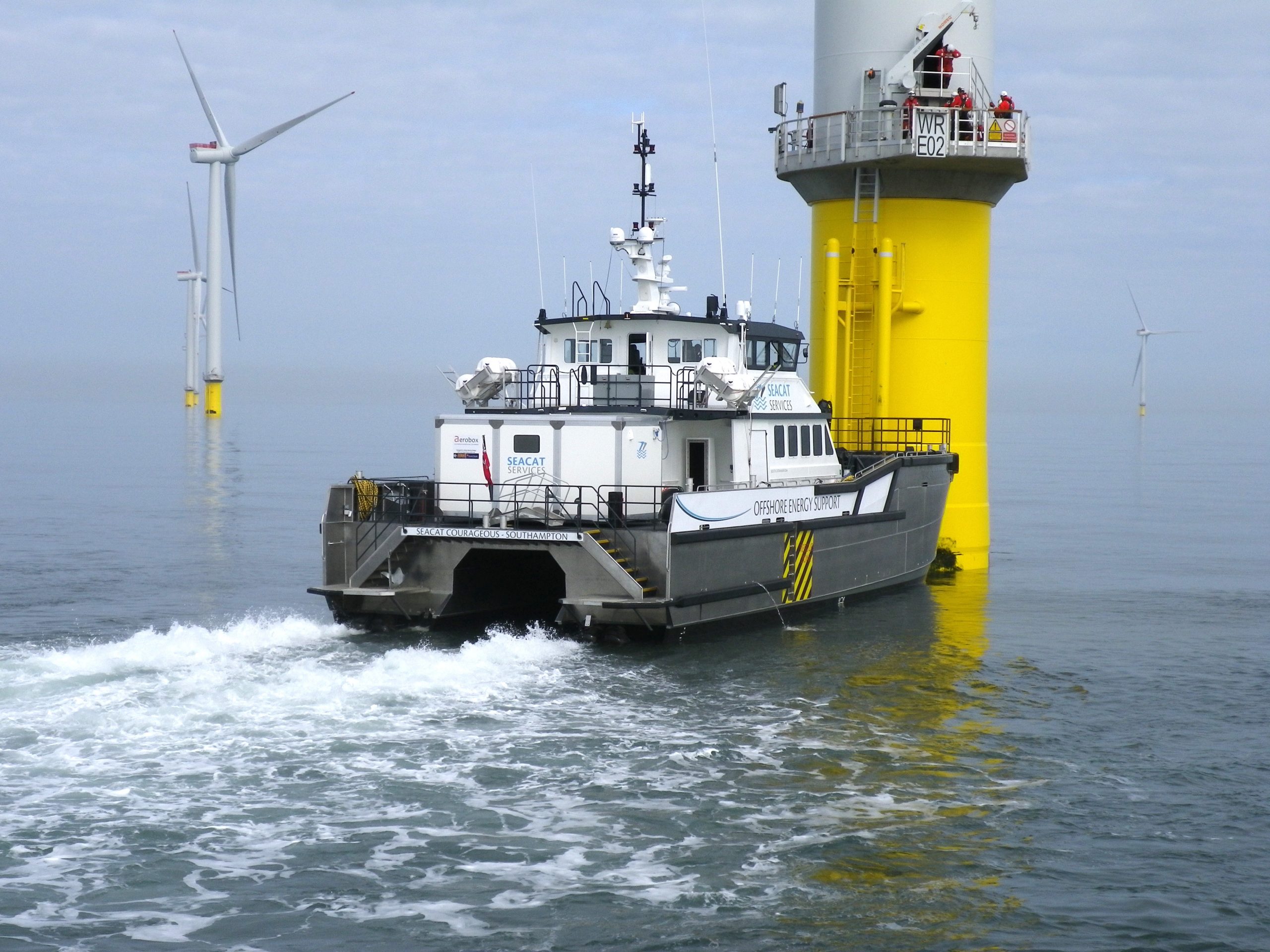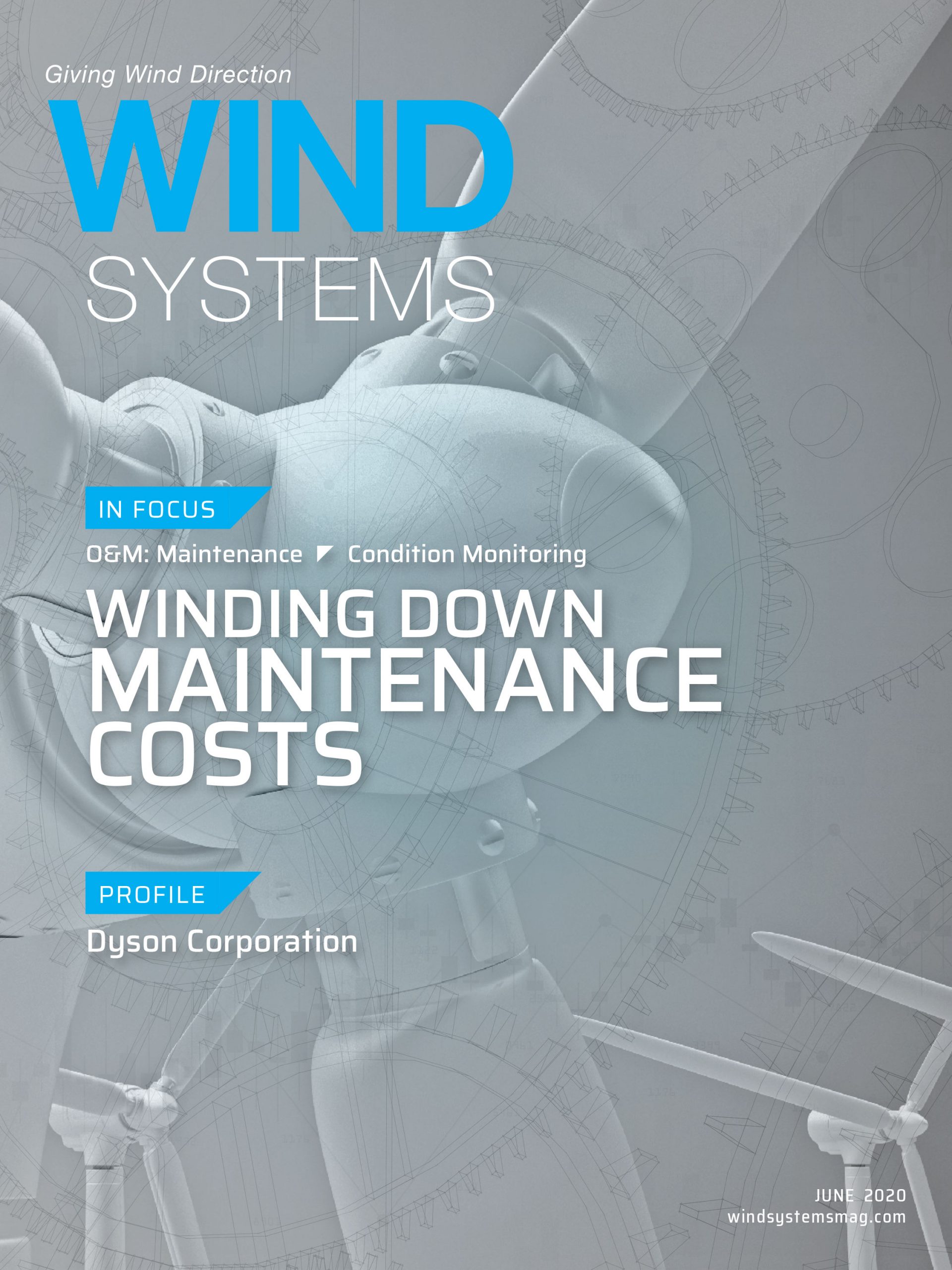Tell us about Reygar.
We’re a small but fast-growing U.K.-based company specializing in remote monitoring systems for boats. We created a product called BareFLEET, which is a versatile remote monitoring and reporting system that brings all the real-time data from across a vessel’s sensors into a single portal. We work with vessel operators across commercial marine — including towage, ferries, surveying, and pilotage — but most of our customers are crew transfer vessel operators in the offshore wind industry. That’s about 90 percent of our business.
In what capacity is Reygar involved with wind-energy projects?
We supply remote monitoring systems to probably half a dozen of the biggest CTV operators in Europe. That would include Seacat Services, CWind, High Speed Transfers, and World Marine Offshore. The monitoring and reporting system we supply meets a number of their commercial and operational needs, but also their customers’ needs because they often share the performance data from their vessels with their wind-farm owner-operator customers. This is partly as a trust-building and transparency exercise and partly as a way for both parties to have an impartial measure of how each vessel is performing.
Why is that vessel data important? And what makes it especially critical during this particular threat with COVID-19?
Before COVID-19 came along, there are two main areas where customers would see a benefit from BareFLEET: The first is in the planned and preventative maintenance area. The system can gather and record all sorts of operating data across critical machinery and engines, to running temperatures, oil pressures, engine alarms, machinery vibration — all those sorts of things. And because that’s all reported remotely, it allows customers with large fleets of vessels to really keep on top of what’s going on.
Essentially, BareFLEET is like having a pair of eyes in the engine room without being there. When you have a lot of vessels to manage, that can really help you to spot problems early and prioritize maintenance activities so that you can maximize the uptime of the vessels. In the wind-turbine industry, the crew transfer vessels are working really hard. They’re out pretty much every day. They can’t afford to have a day off for maintenance. It costs them money. That’s the first thing.
The second area that’s really useful is in measuring the performance of the vessel both in terms of its fuel economy — its emissions and a breakdown of when excess fuel is being used — and, particularly for crew transfer vessels, in terms of the motion of the boat. The crew transfer industry is all about delivering engineers and technicians out to the wind farm in a fit state to work, and so things like measurements of motion sickness and measurements of the stability of the boat when it’s parked up against the turbine — what’s called “pushing on” — those are really important measurements. They tell both the vessel owner and the wind-farm operator if the vessel is delivering people in a fit state to work and if it is allowing them to transfer onto the turbines in a safe environment where the boat’s not moving up and down excessively.
All of that information is gathered by BareFLEET and made available to the customer on shore. And it’s presented in a very simple way. We can present the information they need to see clearly and succinctly as a “transfer score” that summarizes how successful the movement of the technicians from the vessel to the turbine was, rather than show them excessive data. It allows them, over a period of days or weeks or months, to do key performance analysis and say, “OK, this boat’s performing well in these conditions; this site is better than that site; January is worse than July for transferring technicians.” That kind of information is really, really useful from an operational perspective.
That’s kind of every day; it’s just what BareFLEET does — but what we’ve noticed since COVID-19 is customers have been approaching us and saying: “We need this data, particularly the kind of maintenance-related engine health information, more than ever because we’re running a lean crew, and the engineering team is working from home.” Vessel operators are trying to run the show from home, and it’s much more challenging to manage the fleet when they can’t actually walk down to the quay and take a look at the boats themselves.

They’re relying on this remotely gathered information to be their eyes and ears on the boat. Sometimes they are coming to us with specific queries like “Can you help us understand this particular trend?” — for example an oil pressure trend, or engine-speed trend — but actually, what they’re asking for most is more access to the BareFLEET database.
Where we would typically provide them our own daily reports, which are a kind of a concise presentation of what a boat’s been doing on a particular day, they’re now wanting access to the raw data so their engineers can go on to our system and look at their own trends of oil pressure, coolant temperatures, engine speeds, CO2 emissions and fuel burn efficiency from home. They want to go in and look at the data themselves because they have experience with their boats that we will never have. We’re providing them with access to that raw data, which is not something that we really focused on before.
How does that dovetail into the current crisis, and has BareFLEET been modified to look for this? Or is this something that it was already capable of doing?
It’s a bit of both. The engine health, motion, and performance reporting is something that BareFLEET has always been able to do. The raw-data database access, which our customers have been asking about recently, is something that we’ve prioritized the development of, particularly in view of the current challenges with COVID-19. Database access is something we’ve been working on for a while, but I would say that it’s been brought to a head by COVID-19 and caused us to prioritize that development.
What makes the interface particularly unique?
Where BareFLEET sets itself apart is in the way it’s a complete comprehensive system that brings together data from all sensors across the vessel. Many companies provide systems that will look at fuel monitoring or systems that might look at engine health monitoring or systems that might look at vessel motion — but what we do is bring all that together because we understand what the customer needs. And they need all of that information to be accessible clearly and simply through one portal.
When a vessel operator is considering a remote monitoring system of any sort, there are a few basic things they are going to look for. First up, they’ve got a fleet of various types of boat — they’ve got different engines, different hull forms, different design, speeds, whatever — but the operator needs a system they can deploy across all those boats. They are not going to want a monitoring system that only works with one engine brand or one navigational system.
At the same time, they’re not only going to be interested in fuel information or only interested in motion. They’re interested in everything that affects the performance of the vessel and the variables that affect transfers. If they can get all of that through one system, that’s an advantage to them because they don’t want to be on four different web portals: one for motion, one for engine health, one for this, one for that, one for Caterpillar engines, one for Volvo engines. It’s just not manageable. They want to go to a company that can provide it all through one service, and that’s where we specialize.
Was it an easy transition from the standard use of the interface to going to the methods you’re using now?
Providing access to the raw data through the new database features is something that we have had in the pipeline for a while. We always had an idea of how we were going to do it, but COVID-19 has given us the push to burn the midnight oil and focus on developing and implementing the new software to provide this raw data access.
Post-crisis, do you see the BareFLEET interface being used in even more applications and situations now that you’ve got this experience?
We certainly hope so. The U.S. market in particular is a really interesting one for us. We are already dipping a toe in the water in the U.S with customers operating fleets of tug boats and ferries, but we are also looking at the growing opportunities for offshore wind in the U.S. In our view, the U.S. market is likely to adopt a lot of the best practices used in the more mature European market.
We are increasingly seeing longstanding clients of ours — European crew transfer vessel operators — looking to move into the U.S market or partner with vessel operators out there and bring us with them. We are already seeing a lot of inquiries from local vessel operators and have installed BareFLEET systems on a couple of boats that will be operating on the East Coast. It’s still quite the early days for U.S. offshore, but getting in there at the beginning and building those relationships with project owners and vessel operators is no less important.
More info www.reygar.co.uk































